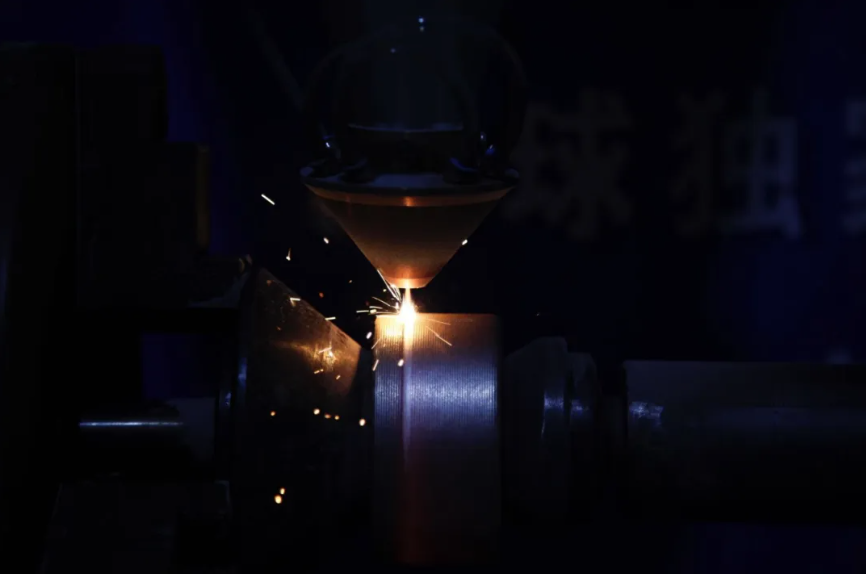What is Laser Heat Treatment?
Laser heat treatment selectively alters the surface of a material, inducing microstructural enhancements using rapid heating and controlled self-quenching while maintaining its structural integrity. This article provides an overview of how laser heat treatment works, the various technologies and processes involved, key applications across industries, and the future prospects of this rapidly developing technology.
Laser heat treatment is a surface processing technique that uses a high-powered laser beam to selectively change a metal surface's composition, structure, and properties. It is commonly applied to steel and cast iron materials where enhanced wear, fatigue, and corrosion resistance are required. Compared to traditional heat treatment techniques, laser heat treatment has the unique ability to precisely target specific areas for property improvements while maintaining the integrity of the underlying material. This precision enables surface modification without the risk of warping or cracking, making laser heat treatment a highly accurate and versatile method for a wide range of parts and products across a variety of industries.
The process begins by irradiating the metal surface with focused laser energy, which is mainly absorbed by the metal surface. This absorption triggers the excitation of electrons inside the metal, resulting in collisions between the electrons and the metal lattice structure. As a result, heat is quickly transferred from the metal surface to the interior, resulting in a high cooling rate, which is a key factor in achieving surface hardening.
What makes laser heat treatment different is its high power density, which means that a large amount of energy is concentrated in a small area, allowing the treatment area to quickly reach the required temperature. After laser heating, most of the workpiece is still at a lower temperature, which is conducive to controlled self-quenching through heat conduction inside the metal. This will cause microstructural changes such as phase transformation, carbide dissolution, and grain refinement, ultimately forming a surface layer with stronger properties while maintaining the overall integrity of the component.
Laser heat treatment technology uses three different methods:
1. Phase transformation hardening
Laser phase transformation hardening (laser surface hardening) is the most common laser heat treatment process, which uses a high-power laser to quickly heat the shallow surface layer of ferrous alloys to above the austenitizing temperature. This eliminates microstructural banding and diffuses carbon, producing a uniform martensitic or bainitic structure. The depth of hardening is controlled by the laser power and exposure time. This method increases the ultimate hardness while minimizing deformation, greatly extending the service life of components such as engine parts, cutting tools, molds and bearings.
2. Laser annealing
Laser annealing uses a low-power laser to heat the metal enough to eliminate stress, restore ductility and eliminate the effects of cold working. Although less common than phase transformation hardening, laser annealing can also be used to improve the fatigue strength of steel belted radial tire wire and repair cast aluminum casings with misaligned holes.
3. Laser surface melting
Laser surface melting refers to the use of a high-power laser to melt a thin layer of metal on the surface and then self-quench it. This process improves the microstructure and composition of the surface. It also homogenizes alloys, dissolves harmful inclusions, and improves corrosion resistance in aluminum, nickel, and bronze marine propellers. While solidification may initially result in roughness, the improved performance often justifies the additional smoothing process. For example, remelting cast iron camshaft vanes results in a uniform, wear-resistant martensitic housing.
Laser heat treatment is now widely used in industries that require high wear resistance.
Application of laser heat treatment in the automotive industry
In the automotive industry, laser heat treatment is applied to key engine components, including cylinder blocks, cylinder liners, and crankshafts. For example, General Motors uses high-power CO2 lasers to partially harden the inner surface of commutator sleeves, significantly increasing work efficiency by four times and reaching a daily output of 30,000 sets.
2. Laser heat treatment in locomotive manufacturing
The large locomotive manufacturing industry is increasingly using laser heat treatment technology to improve the durability of locomotives. This includes the treatment of key components such as crankshafts, cylinder liners, and main springs of locomotive diesel engines. In addition to manufacturing, laser heat treatment of mold surfaces is also increasingly recognized in the complex, high-precision mold manufacturing process used in locomotive production. This technology can double the service life of the mold without being restricted by shape or size.
3. Laser heat treatment in the steel industry
Laser heat treatment in the steel industry provides a variety of hardening options for wear-resistant steel parts such as stamping dies. It helps achieve surface hardnesses of over 60 HRC for cast iron and over 70 HRC for medium and high carbon steels. This provides increased resistance to wear, fatigue, corrosion, and oxidation without causing brittleness.
Continued advances in laser technology, such as high-power lasers, robotic automation, and innovative hybrid processes, will make laser heat processing faster and more flexible. Industry 4.0 connectivity and data analytics will optimize laser systems, while specialized alloys tailored for laser processing will improve material properties. This transformative manufacturing process is expected to be more widely used across industries, thereby promoting the manufacture of high-performance products.
Reading more at https://www.mrj-lasermark.com/info/





Comments
Post a Comment